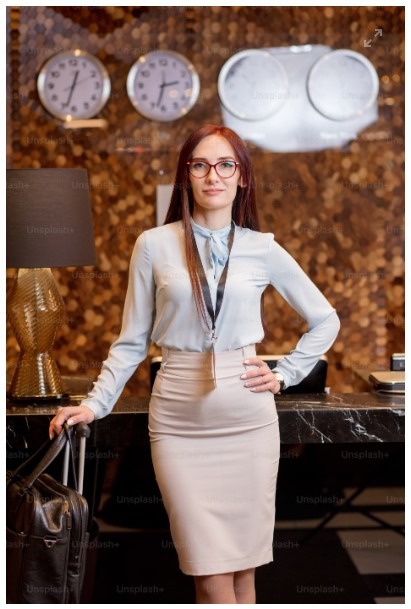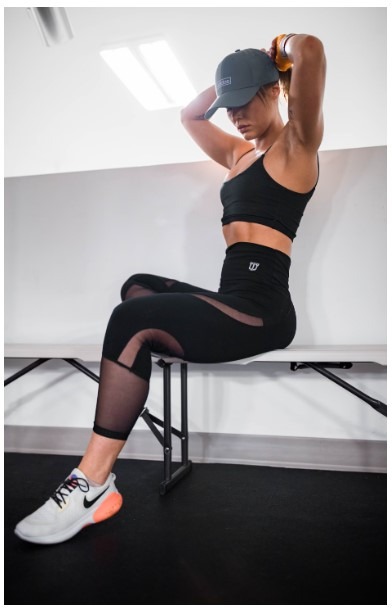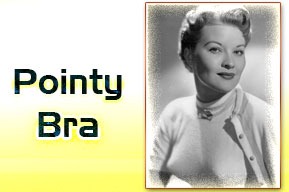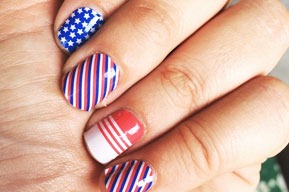Sometimes, looking at the newest fashion trend would make you say, “this is not new.” No matter how creative and innovative designers think they are, their source of inspiration is usually something that has, in some way, been done and used before. Designers and stylists usually look for inspiration, not only in recent fashion history like the ’70s to ’90s; they also look way back in times. Here’s some proof for this claim:
 1. Platform shoes
1. Platform shoes
Platform shoes were a fashion trend during the 1970s, appearing in ads and magazines during the decade in Europe and Britain. Young women in their teens and twenties, and even men, stylishly wore this uncomfortable shoe during the decade primarily as a way to attract attention. The trend resurfaced in the 90s, thanks to fashion designer Vivienne Westwood and the pop girl band Spice Girls.
Some would think this really began in the 70s, but it already existed in 16th century Venice, Italy. It also became popular in Spain than in other European countries as well. These platform shoes were called chopines. People initially used chopines as wooden clogs worn over their expensive shoes to keep it and their dresses from getting dirty when walking on muddy streets. Later on, people got a bit crazy about the shape and the height of the shoes. Some were decorated with various embellishments, some had no heel, and some were even over 20 inches tall. Rich women who wear this typically had an attendant who would hold their hands at all times.
 2. Leggings
2. Leggings
Leggings probably one of the few clothing items that are both fashionable and comfortable, and is as versatile as it can be – it’s usable as a sportswear, casual wear or evening wear. Women usually wear them to show off their sexy legs while pairing it with short dresses, long blouses, oversized sweaters, tank tops, denim miniskirts, plaid skirts and many more. During the 1960s, leggings came into women’s fashion, drawing from the form-fitting clothing of dancers and acrobats.
But did you know that these close-fitting garments were originally worn by men way back the Renaissance period? Some outdoorsy men like those from the Scottish Highlands, Long Hunters, and French fur trappers used a type of legging for warmth and protection.
 3. Pencil skirt
3. Pencil skirt
Also called the uniform of the 50’s working lady, the pencil skirt is a decent-looking fashion item. In 1954, French designer Christian Dior introduced the pencil skirt in his Autumn Winter collection. From then on, it became very popular due to women’s prevalent desire for new fashion trends in the wake of World War II and Cold War rationing.
Well, Christian Dior probably knew about the hobble skirt, a fashion statement before World War I. A 1911 postcard depicted the hobble skirt, with this caption: “The Hobble Skirt. ‘What’s that? It’s the speed-limit skirt!’” Yes, that’s really what it was. The skirt was long and tied around the legs to force the wearer to walk in just short strides and to prevent from revealing legs when practicing a physical activity. As it became a trend in the early 20th century, women even started to tie it around their ankles, making climbing even a single flight of stairs a huge challenge. Compared to that, the pencil skirt means total freedom of movement.
 4. Pointy Bra
4. Pointy Bra
Madonna’s famous cone-shaped bras were designed by Jean Paul Gaultier for her Blond Ambition Tour during the 90s. It became a symbol of women power, expressing female sex appeal and sexual fantasies.
This bra trend was actually seen as feminine and desirable during the 1940s to 50s. Before technology knew how to mold a piece of flat fabric into rounded breasts, the closest we could get was by taking a woven fabric and draping it into the breast in a pointy shape. This was called a bullet bra, which complements sweater girl fashion. Celebrities like Marilyn Monroe, Jane Russel and Patti Page confidently posed in front of cameras wearing that pointy bra.
 5. Skinny jeans
5. Skinny jeans
Skinny jeans are so common today, especially with teenagers and young men and women. Nobody wants those flapper jeans that don’t give your legs some justice.
The skinny jeans, or slim-fit pants, is popular among men and women around 2008 until today. However, they first came around 1950s and were worn by rebellious teenagers who don’t want to look like their parents. Back then, these were called “cigarette pants.” It was notable with country music stars and the birth of rock and roll in the 1950s, with Elvis Presley shocking the country with his slim-fitting jeans. It was linked to the “bad boy” image that remains until today.
6. Padded shoulders
Paddings for the shoulders were popular in the 80s until the 90s, especially with working men and women. Now, it’s perceived as a funny thing of the past that makes your proportions look totally off.
But in England, Queen Elizabeth I and the members of the high society kept their shoulders and sleeves swollen using mountains of stiffening and padding, which was called bombast. The filling weighs several kilos just to make the sleeves look nice and round. Imagine how heavy and uncomfortable that is, especially if you need to raise your hand. The tiny little bit of padding in a blazer is nothing compared to that.
 7. Colored nails
7. Colored nails
Women love nail polish – it never runs out of fashion. For nail junkies, a trip to the nail salon gives them the relaxation and stress-reliever they need.
We owe this fashion trend to the ancient Egyptians who decorated bone, ivory, and gold to fix themselves some artificial nails. As it seems to be the trend in their society, the color of the nails indicated social status. Lower classes were allowed to color their nails, but only using pale colors. Red was for royalty only. The richer the person is, the stronger the shade and the more elaborate were the nails.
8. Rolled hair
Rolled updos are elegantly fashionable, for instance in bridal style. It makes a long-haired woman look demure, sophisticated and classy. Short-haired girls wearing a rolled-up hair looks edgy and punkish, just like those Yves Saint Laurent models on the catwalk. For men, James Dean and John Travolta also popularized that curly hairdo where all the hair is put up and rolled towards the front.
But in 18th century England, France, and western Europe, people were already rolling their hair big time. Men were copying women’s hairstyles and they were called macaroni because that’s just how it looks. Remember your classical music class back in grade school – your textbooks show Mozart with that hair.
9. Platinum gray hair
Celebrities like Lady Gaga and Kelly Osbourne made grey hair look stylish and futuristic. Before, gray hair was typically only for old people. Younger generations today consider gray hair as a new hair color for a swanky new look.
However, it was already popular in 18th century Europe, especially in England. Royalties used to color their sky-high hair in soft shades of gray with powdered pastel colors. In fact, hair bleaching was also popular in the 16th century, especially in sunny areas. Women would sit in the sun for long hours with herbal pastes applied to their hair to bleach them and get that silver mane.


 1. Platform shoes
1. Platform shoes 2. Leggings
2. Leggings 4. Pointy Bra
4. Pointy Bra 5. Skinny jeans
5. Skinny jeans 7. Colored nails
7. Colored nails